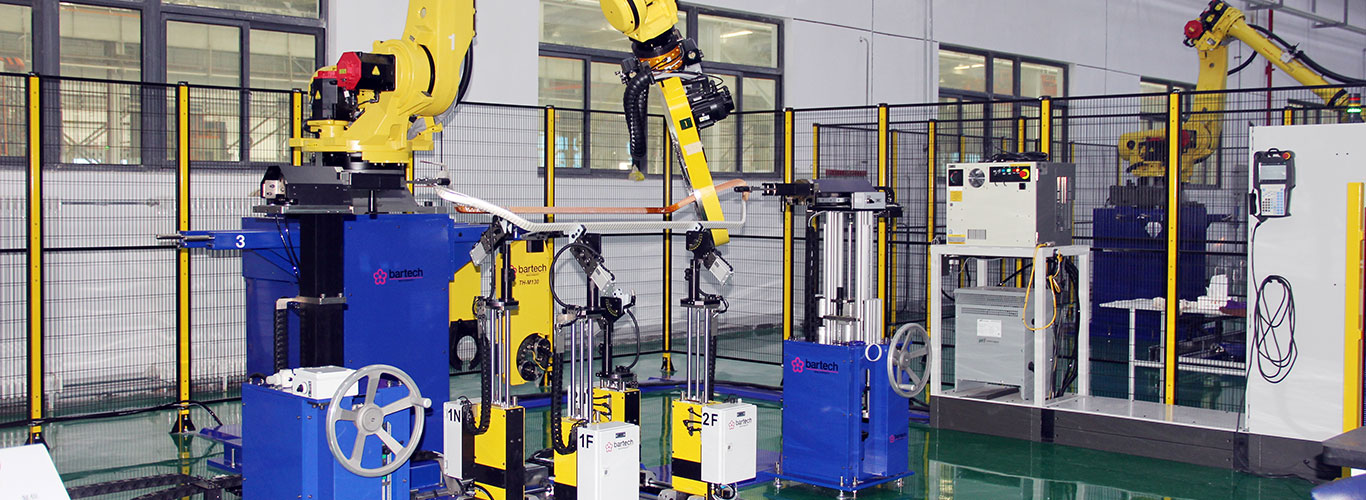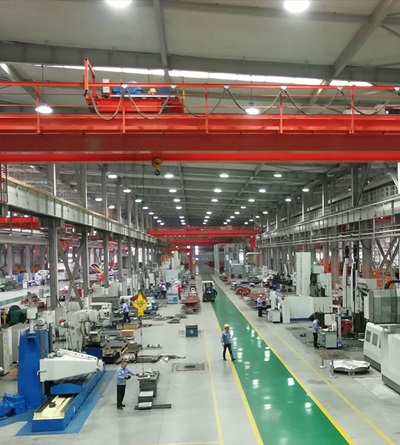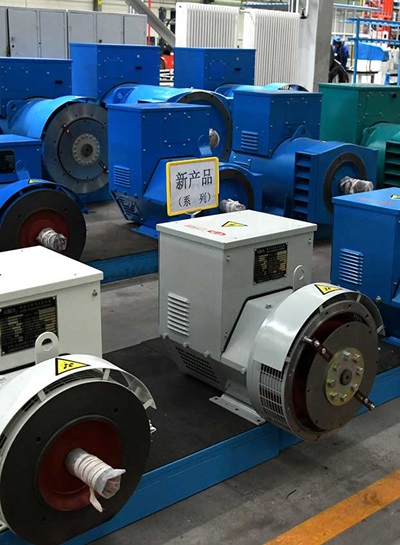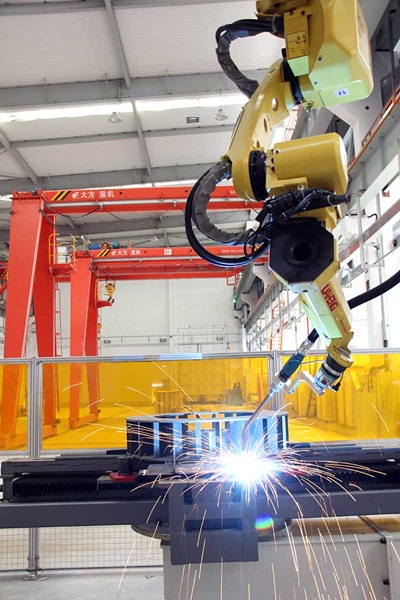Landian Reduces Lead Times and Improves Efficiency by Adopting Out-of-the-Box, Standard Digital Product Development Processes
As companies grow, the strain on product development processes increases. This is true for all manufacturers, including Lanzhou Electric Co., Ltd—one of China’s largest motor manufacturers. When they began the transformation of their key product development processes, they were focused on two things: achieving maximum productivity at each lifecycle phase and ensuring scalability for future growth and business needs.
Landian is one of China’s premier motor manufacturers
Founded in 1958, Lanzhou Electric Co., Ltd (Landian) is one of the largest motor manufacturers in China. Dedicated to providing premium motor system solutions, Landian focuses on the research and development (R&D), manufacturing, and service of motors, generators, energy equipment, and more. Their products are widely used by customers in industries like electric power, water conservancy, building, metallurgy, and mining. Landian’s world-renowned products and solutions are exported to 26 countries and regions on five continents.
As Landian has grown over the past several decades, their product development requirements have also increased dramatically. The number of products they offer is always increasing, as is the variability of those products. This results in the high complexity of data, processes, systems, and organization, as well as high costs. At the same time, due to competitive pressures, manufacturing companies like Landian are increasingly expected to shorten their new product development cycles. With the combined pressure of increasing data and shortening product cycles, Landian decided it was time to rethink their product development processes.

An opportunity to improve product data management and design processes
Landian recognized several opportunities to accelerate and improve their product development and design processes. The first area of focus was around unifying their engineering environment; Landian’s design tools were previously stored and managed on paper. They didn’t have 3D design applications, and bills of material (BOMs) had to be transferred with paper plans. These manual processes created the potential for human errors and were often not easy to check. Paper-based processes also limited design reuse rate (especially across sites), which led to repeated work and increased costs due to a lack of cross-department visibility.
Furthermore, with disparate systems and manual processes, it was often challenging for Landian to standardize the management of raw materials and products. Communication and collaboration weren’t as efficient as they could be, resulting in errors between handoffs and a strain on quality checks. And finally, the new product delivery cycle was lengthy—design and production could take two to three months.
To better manage product development and design processes, Landian recognized it was time to implement a unified computer-aided design (CAD) and product data management (PDM) system. By shifting from managing product data with paper-based, manual processes to digitized, systematic processes, Landian created a single authoritative source of truth enabling better collaboration throughout the company. But first, Landian needed to find the right partners for their initiative.
Landian partnered with PTC to
implement a unified CAD and PDM
solution

First, Landian selected Windchill as their product lifecycle management (PLM) platform of choice. Windchill is a comprehensive PLM software for data governance and traceability, providing out-of-the-box functionality to realize value quickly through standardized processes. Windchill delivers the core PDM, configuration and change, BOM management, and project management capabilities that facilitate securely sharing consistent data across disciplines, geography, divisions, and external partners. Windchill’s open architecture enables seamless integration to manage, associate, orchestrate, and flexibly deliver data across the value chain. When product changes are needed, Windchill provides the ability to capture issues or enhancements, document and implement related updates, and send out information to all stakeholders for early visibility.
Windchill delivers the core PDM, configuration and change, BOM management, and project management capabilities that facilitate securely sharing consistent data across disciplines, geography, divisions, and external partners.
Windchill can also be embedded in Creo 4.0, enabling Landian to facilitate a single source of truth between design and PDM. Creo is PTC’s 3D modeling software that allows the user to create, analyze, view, and share designs downstream using CAD modeling capabilities. Windchill’s tight integration with Creo and other engineering tools enables a concurrent design environment. When used together, they gain efficiencies in organizing, tracking, and re-using all design data—eliminating tasks that don’t add value and helping Landian hit their cost and schedule targets.
Landian accelerated the product development process with Windchill and Creo
While Landian are still rolling out the solutions across their enterprise, Windchill and Creo are already having a significant impact on the product development process. With the PTC solutions, Landian has established a unified PLM platform to centralize the management of data. This enables a digital document management system with the product structure (BOM) as the foundation, vastly improving collaboration because CAD and assembly structures are managed in the same system. The management of product data, technical drawing documents, and process knowledge base is more efficient and secure, and Landian can easily manage version validity, access rights, and more.
Landian improved reuse rate by 30% and increased accuracy rate of product delivery to 98%.
 With Windchill and Creo, Landian is standardizing
and digitizing the work processes of the R&D
department. Leveraging the comprehensive
PLM platform, design engineers are shifting
away from a paper-based management work
model to a digital one. They will actively promote
standardization to create a more effective
development process and improve the core
competitiveness of the enterprise. Landian has
successfully created an enterprise 3D model
library, standard parts library, and material library.
Additionally, stakeholders can access a 3D
digital version of the main product throughout its
development lifecycle.
With Windchill and Creo, Landian is standardizing
and digitizing the work processes of the R&D
department. Leveraging the comprehensive
PLM platform, design engineers are shifting
away from a paper-based management work
model to a digital one. They will actively promote
standardization to create a more effective
development process and improve the core
competitiveness of the enterprise. Landian has
successfully created an enterprise 3D model
library, standard parts library, and material library.
Additionally, stakeholders can access a 3D
digital version of the main product throughout its
development lifecycle.
Because Landian now has a central system that
can be accessed by all teams, they’re enabling
different departments to work collaboratively
and business processes to operate in parallel.
The standardization of change management and
version control ensures the accuracy of product data, technical drawings, and documents. By
facilitating a single, authoritative source of truth
across different departments, they’re realizing their
goals of improving design quality, reducing overall
costs, and promoting sustainable development. In
fact, they’ve increased reuse rate by 30%.
As they move forward, Landian will continue to make improvements. They’ll define the R&D processes according to different product series and sort out clear project roles, task lists, delivery lists, document templates, approval processes, and more, further standardizing the process. At the same time, Windchill gives them the ability to customize the standardized processes more easily when necessary.
Landian has achieved their goal of establishing a product development process that unifies PDM and CAD. They’ve realized process standardization, design coordination, and knowledge sharing to increase quality, efficiency, and accuracy. Impressively, the accuracy rate of product delivery has increased to over 98%. And this is just the beginning for Landian. With a unified CAD and PDM system, they are fueling transformation and setting the stage for continuous improvements across products, equipment, and management.